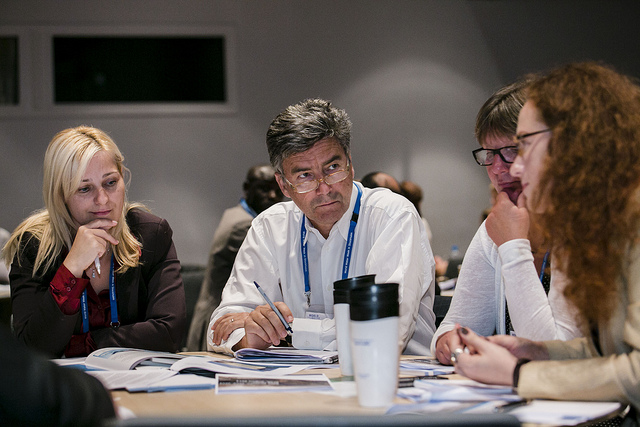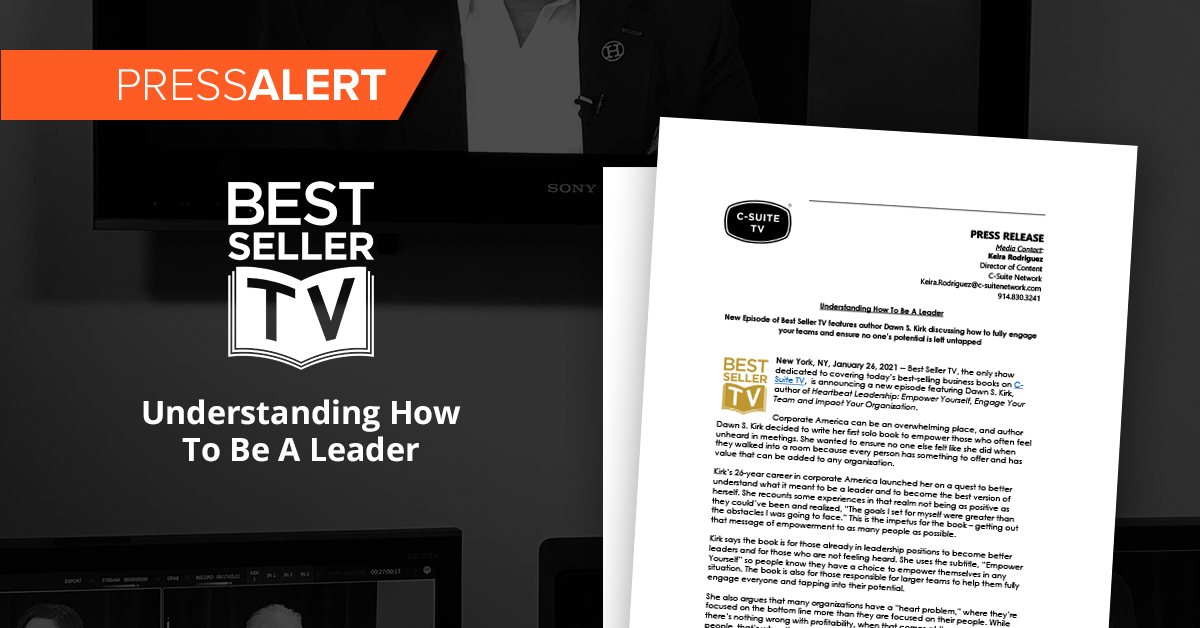
Growing Up is Hard to Do: Charting Course from the Future 500 to the Fortune 500 | Part 1
Growing Up is Hard to Do: Charting Course from the Future 500 to the Fortune 500 | Part 1 https://csuiteold.c-suitenetwork.com/wp-content/uploads/2015/05/9668456287_7d6bb28742_z.jpg 640 427 C-Suite Network https://csuiteold.c-suitenetwork.com/wp-content/uploads/2015/05/9668456287_7d6bb28742_z.jpgby Ron Carucci
No doubt this title will provoke baby boomers to cue Neil Sedaka music in their heads as they join the lament of midcap company executives (let’s call them $100M-$1B) intensely focused on finding pathways to sustainable company growth. The number of midcap organizations (now more than 200,000 in the U.S.) and the number of people they employee continues to outpace small business growth and Fortune 500 performance. As do their loudest laments:
“I run around all day like a chicken with my head cut off, and not sure what I got done when the day is over.”
“I don’t feel like we are all rowing in the same direction — it feels like a lot of us are not on the same page with where we are going.”
“If I don’t tell them exactly what to do, it doesn’t get done. I might as well just do it myself.”
“I think the chaos is starting to get to people. For the first few years it was fun, but now the amount of bickering and the time I spend refereeing are telling me something’s got to change.”
The consistent question we believe lies underneath these leaders’ frustrations is “How do I step away from the daily grind of working in the organization to find the capacity to work on the organization?” Regardless of which aspect of the organization cries for attention, midcap executives suffer in the breach between today’s demands and tomorrow’s opportunities. As an increasing number of executives have reached out for help, we’ve identified several patterns as we’ve accompanied them on their journeys to growth into mature organizations.
In this two-part series, I’ll discuss two types of patterns that impact the realization of sustainable growth. In this post, we’ll look at strategic patterns — issues affecting the company’s identity, positioning and direction. In the next post, we’ll look at organizational patterns – issues like culture, organization design and leadership that can help or hinder growth.
By organizational maturity, we mean the degree to which the organization has the needed processes, systems, structures and culture in place consistent with its current and desired growth and size. Maturity, and size are different. Just because a company has revenues of $500M doesn’t mean it has the maturity of a $500M company. We’ve seen many companies with revenues of $8B+ struggling to operate at the maturity level of a company less than $1B. That’s because the necessary work to intentionally grow up was arrested — or never done. So a $200M company can have greater maturity than a $1B company despite being a fifth the size.
Among midcap companies, arrested maturity is an all-too common predicament. Whether due to the frenzy of accelerated growth or the daily grind and struggles to keep the lights on, an organization focused exclusively on today provides no time or capacity to plan and scale for tomorrow. Great executives force themselves to rise above the fray and focus the organization on the future requirements of growth despite the lure and immediacy of today’s fires.
These are four common strategic ditches we see midcap companies needing to dig out from. The good news is they are very avoidable, and if you find yourself in or headed toward one, they are survivable if you pay attention.
- Prepare for major shifts.
For smaller companies, major change feels like a major body blow. A transition to new ownership, a competitor’s sudden market share gain, regulatory and compliance mandates, or a major customer unseating you or naming you as strategic supplier, can all have profound impact on accelerating or stalling growth. The fragility of a smaller company’s growth must be bolstered by contingencies for such unforeseen shifts. But smaller companies have all they can handle just to get current orders out, stretch thinning resources, or pacify an angry customer. Thinking about issues which haven’t happened yet feels impossible. Yet with even a little foresight, they can do basic scenario and contingency planning that helps them rehearse the future before it arrives. While they may not have big strategic planning functions like the Fortune 500 might, they can still become strategists and plan as if they do. - Avoid counterfeit strategies.
It’s astounding how many companies will produce a financial plan or forecast when you ask to see their strategy. A compiled list of customers, products and revenue forecasts is an interesting look at what they hope to accomplish in the coming year, but it’s not a strategy.The other all-too-common replacement for strategy is when executives whip everyone into a crescendo by writing down their “mission, vision and values” statements. While these are important, by themselves they are insufficient and a poor counterfeit to real market identity. Perhaps the worst is whem they let their identity be formed by their buyers — whoever the sales force gets to say yes and buys the most, that’s the strategy. Executives in midcaps who say, “we’re too small for that kind of strategy work” do so at their own peril. The basic identification of your competitive positioning, your unique capabilities and the investments required to protect them, in addition to a shortlist of prioritized work to advance your position, can be built by companies as small as $10M. It’s a function of discipline, not size. - Don’t confuse replication with sustainable growth.
Many smaller companies are fortunate to find early tailwinds — a market niche for a service or product that grows rapidly. So “rinse and repeat” or “riding the wave as long as we can” becomes the strategy. This approach ignores the fact that one day the wave will crest. Being able to quickly replicate success is not the same as building for sustainable growth. And once the growth outpaces the organization’s capacity to supply it, you can hear the organizational seams ripping apart just trying to keep up while the cash rolls in. Stopping a train of success long enough to design strategies and organizations that can sustain growth is what distinguishes great executives from those that ride the wave until it crashes on them. - Put strategy in the hands of many.
In most small companies, it is the owner or one singular visionary calling the shots about growth with loyal soldiers simply carrying out the direction. This danger can’t be overstated. The insight, reach and creativity of a single leader, or a very small group of them, runs out long before they realize it — sometimes years before. This issue is greatly amplified when the founding executive remains in the picture.“Founderism” prevents the founder from separating his own identity from the company he created. As such, every decision, every critique, every suggestion, is weighed with unhealthy personal interpretation. The price of failure to transition to a broader group of executives coming together to co-create the future is pronounced when the great ideas finally run out and nobody else has been asked to offer any. Exceptional executives build teams of leaders around them well in advance and prepare them for sharing the reins of the future.
Making a few meaningful adjustments to how you think about your future, and how you plan to get there, can make all the difference in ensuring that you actually do. Next time, we’ll turn our attention inside the organization and how you build for growth and maturity.
 Ron Carucci, Co-owner and Managing Partner of Navalent, is a seasoned consultant with more than 25 years of experience working with CEOs and senior executives of organizations ranging from Fortune 50s to start-ups. He has consulted to some of the world’s most influential CEOs and executives on issues ranging from strategy to organization to leadership. Best-selling author of 8 books, including the recent Rising to Power, The Journey of Exceptional Executives, he has been featured in HBR, Bloomberg, CNBC, CEO Magazine, BusinessInsider, Business Week and Fortune.
Ron Carucci, Co-owner and Managing Partner of Navalent, is a seasoned consultant with more than 25 years of experience working with CEOs and senior executives of organizations ranging from Fortune 50s to start-ups. He has consulted to some of the world’s most influential CEOs and executives on issues ranging from strategy to organization to leadership. Best-selling author of 8 books, including the recent Rising to Power, The Journey of Exceptional Executives, he has been featured in HBR, Bloomberg, CNBC, CEO Magazine, BusinessInsider, Business Week and Fortune.




